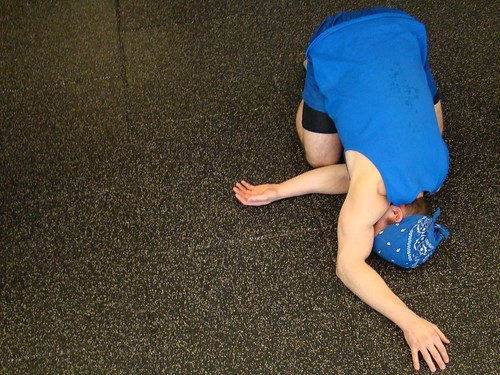 Systems thinking in health care forces the clinician to venture far from the shore in terms of their training and their beliefs. But in order to have a truly comprehensive system of health care, it will require clinicians to push the envelope of their thinking and let go of their belief systems. They will need to embrace assessment processes that allow the clinician to understand the behavior of the system as a whole, and a patient-centered treatment approach that emphasizes self care strategies.
Systems thinking in health care forces the clinician to venture far from the shore in terms of their training and their beliefs. But in order to have a truly comprehensive system of health care, it will require clinicians to push the envelope of their thinking and let go of their belief systems. They will need to embrace assessment processes that allow the clinician to understand the behavior of the system as a whole, and a patient-centered treatment approach that emphasizes self care strategies.
Mechanical Diagnosis And Therapy (MDT) is a true systems approach to disorders of the musculoskeletal system. It is the next great revolution in musculoskeletal care, yet it also currently creates discomfort amongst many clinicians. Why? It forces clinicians to let go of the patho-anatomical model of care they have held near and dear for decades.
 Although there is one reality, one series of events taking place in time and space, our perception of those events – and the data that we filter out – varies significantly from person to person. There is but one reality – or is there?
Although there is one reality, one series of events taking place in time and space, our perception of those events – and the data that we filter out – varies significantly from person to person. There is but one reality – or is there?
The world we live in, our personal map of reality, is largely shaped by our self perception and self image. Perceived competence and self-efficacy is derived from how we are treated, especially in the early years of our lives. How we are treated affects how we see ourselves, which in turn affects how we treat others and subsequently how we are treated by others.
The irony is that the one thing that provides us with the potential for personal transformation beyond our wildest imagination is that same entity that can provide us with a lifetime of challenges and limitations in our relationships and within ourselves. It’s all in the comfort zone.
 If you ask 10 athletes or 10 coaches what a warm-up is supposed to consist of – and why – there will probably be at least 7 different answers. The warm-up (and cool-down) - and their importance in an training session - tend to attract a lot of debate and discussion.
If you ask 10 athletes or 10 coaches what a warm-up is supposed to consist of – and why – there will probably be at least 7 different answers. The warm-up (and cool-down) - and their importance in an training session - tend to attract a lot of debate and discussion.
Some people will tell you that the warm-up is the time to stretch. Or is it the cool-down that is important for stretching? Do you need to stretch at all? Better yet, do you need to warm-up at all? Should I care? Does it really make that much difference?
There is very little consensus on what a warm-up should entail. Little consensus, and a great deal of misinformation and anecdotal experience thrown in for good measure.
So what is the purpose of the warm-up? Once again, the answer lies in the brain.
 The diagnostic process in health care is, at it’s most basic level, an example of the scientific method in action. Data is collected, a hypothesis is tested, and a diagnosis is made in order to then provide the patient with the most effective and appropriate treatment intervention.
The diagnostic process in health care is, at it’s most basic level, an example of the scientific method in action. Data is collected, a hypothesis is tested, and a diagnosis is made in order to then provide the patient with the most effective and appropriate treatment intervention.
Health care currently exists in a reductionist world. The goal has always been to understand complex problems by reducing them to the interaction of the parts. Virtually all health care providers are taught to think in terms of a patho-anatomical model – in terms of tissues, diseases and conditions. But the textbook cases rarely exist. If the clinician can’t put the patient into a nice, neat category, then what do they do? What happens when you can’t push that square peg of clinical presentation into the round hole of diagnosis?
Sadly, the scientific method has the answer: it is a failure of the patho-anatomical model, and of our own thinking.
 For many, losing weight is a roller coaster experience. They lose it, they regain it, they lose it, they regain it. People start looking for quick fix solutions. Many people never succeed in losing weight. Worse yet, many become obese without ever really understanding why.
For many, losing weight is a roller coaster experience. They lose it, they regain it, they lose it, they regain it. People start looking for quick fix solutions. Many people never succeed in losing weight. Worse yet, many become obese without ever really understanding why.
We now have boot camps and countless products that are “the best solution to losing weight”. And then we are exposed to TV shows like “The Biggest Loser”, with obese participants being yelled at by personal trainers who have almost militaristic and fanatical approaches to exercise.
Do these type of fanatical approaches just attempt to sell more product and prey on an unsuspecting, desperate, and highly fearful public? Does effective weight loss really require such drastic measures?
Effective weight loss has, at it’s core, a very simple premise. It is a simple math equation:
 Training for any sport involves building a framework that will foster success. Program design is the most critical building block for a successful training plan. Periodization, an integral part of program design, can help build this foundation if used correctly.
Training for any sport involves building a framework that will foster success. Program design is the most critical building block for a successful training plan. Periodization, an integral part of program design, can help build this foundation if used correctly.
An effective training program should foster four main goals: build the desired performance level, prevent detraining, prevent under-recovery (and injury), and provide for a standardized and methodical progression of mechanical loading.
Though many coaches will agree on the types of workouts needed for success, there is great disparity in the application of the principles of periodization. This could, in effect, be the difference between success and failure, or between optimal performance and injury.
There are 5 key concepts underlying any optimal training program:
 I would really like to think that the clinical reasoning process is simply a matter of weighing evidence, applying the principles of logic and deductive reasoning, and making sound decisions based on the evidence. Sounds pretty simple, doesn’t it?
I would really like to think that the clinical reasoning process is simply a matter of weighing evidence, applying the principles of logic and deductive reasoning, and making sound decisions based on the evidence. Sounds pretty simple, doesn’t it?
But I know better. It’s not just about evidence. It never has been. If it was, there would never be any emotionally-charged debates on an assessment method or a treatment technique.
Clinical reasoning involves beliefs – whether we want to believe so or not - and beliefs can have a significant disparity with scientific evidence.
We're all driven by our belief systems. We select data to support our beliefs. We impose our own biases on the world around us. Beliefs are not necessarily lies, but they aren’t necessarily the one-and-only “truth” either. Beliefs can trump evidence, sad as that may sound.
But if we know how we function, and we are aware of our thought processes, then we can have greater insight into all the factors that truly impact clinical reasoning. We can become better clinicians and, better yet, better people. With this in mind, I propose a new model for understanding the perceptual factors that influence the clinical reasoning process.
 "Running Injuries: Etiology And Recovery- Based Treatment" (co-author Bridget Clark, PT) appears in the third edition and fourth editions of "Clinical Orthopaedic Rehabilitation: A Team Approach" by Charles Giangarra, MD and Robert C. Manske, PT.
"Running Injuries: Etiology And Recovery- Based Treatment" (co-author Bridget Clark, PT) appears in the third edition and fourth editions of "Clinical Orthopaedic Rehabilitation: A Team Approach" by Charles Giangarra, MD and Robert C. Manske, PT.
 Allan Besselink, PT, DPT, Ph.D., Dip.MDT has a unique voice in the world of sports, education, and health care. Read more about Allan here.
Allan Besselink, PT, DPT, Ph.D., Dip.MDT has a unique voice in the world of sports, education, and health care. Read more about Allan here.
 Top 5 finalist in three categories: "Best Overall Blog", "Best PT Blog" and "Best Advocacy Blog".
Top 5 finalist in three categories: "Best Overall Blog", "Best PT Blog" and "Best Advocacy Blog".